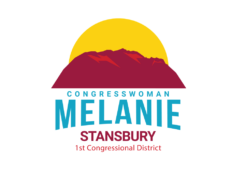
2014 was not the best year for Chegg, the online textbook and content service provider. Though they grossed over $300 million, their bottom line sat nearly $65 million in the red. They began to trim fat over the next few years, but their revenue also fell, and they continued to spend many tens of millions more than they brought in. But that trend—along with the digital textbook market in general—appears to be changing. This week, the company announced their second quarter financial results. With a 38% year-over-year revenue growth, the company is nearly profitable again, reporting a net loss of just $3.9 million.
Chegg was born in 2005 during a period when private investment in Edtech sat at under $100 million, down from $2.5 billion during the Dotcom boom. The next decade would see textbook prices hike at over four times the rate of inflation, creating demand for alternatives to traditional publishers. But while Chegg was somewhat of a pioneer in the early days, a storm of factors—including the advent of digital OER and increased competition—brought more than a couple lean years.
Chegg Reports Strong Q2 Growth
That, however, has begun to change. “We had a great Q2; achieving 32% total revenue growth, driven by 38% year-over-year Chegg Services revenue growth and subscriber growth of 45%,” said Dan Rosensweig, Chairman and CEO of Chegg, in a statement.

“We expanded our services, introduced the Chegg Math Solver subscription and, through the acquisition of StudyBlue, added flashcards, one of the most popular learning tools used by students around the world. We enter the fall semester with significant momentum, giving us confidence to once again raise our guidance for the year.”
In addition, Chegg recently entered into a partnership with McGraw Hill, a textbook publisher that has also struggled in recent years.
Textbook rentals, however, are not Chegg’s main revenue driver. The secret sauce is actually in their class prep services, Chegg Study.
“Chegg Study remains the center of our flywheel and we continue to expand the depth and breadth of the content and capabilities we offer students, which expands both the TAM and the engagement,” said Rosensweig. “In Q2, we increased our catalog of textbook solutions to over 30,000 ISBNs and our library of proprietary, expert answers and solutions is now nearly 24 million, an increase of 42% year-over-year. And students seem to be valuing Chegg Study more than ever, as evidenced by an increase in usage. We had over 315 million Chegg Study content views in the first half of the year, which is up 60% year-over-year. We believe the more content and modalities that we add, the more popular and indispensable Chegg will become.”
Disruption in the Textbook Sector
Chegg’s turnaround speaks to the higher education textbook industry at large. While the price tag of OER entices many professors and students, many others still value the additional course content, such as homework and quizzes, that come with traditional textbook solutions. (Although, some OER curators certainly provide that as well.)
In the mean time, many students seek out used markets or forgo buying some required class material altogether. “What [traditional publishers] have done is they have increased prices for 20-25 years every year,” said Alastair Adam, CEO of Flatworld, another textbook publishing company. “And as they’ve done so, unit volumes have fallen. So the sell through–the percentage of students in every class who are buying a new book–it’s somewhere in the high teens based on the most recent estimates I’ve seen. That means that the 80+% of students in a class are not buying a new book in a class.”
This model is ripe for disruption, and as Chegg continues to find success with its class content supplements, it appears that online distribution at lower prices will prove popular in higher education.
Cover Image: Dhinal Chheda, Flickr.









No Comments